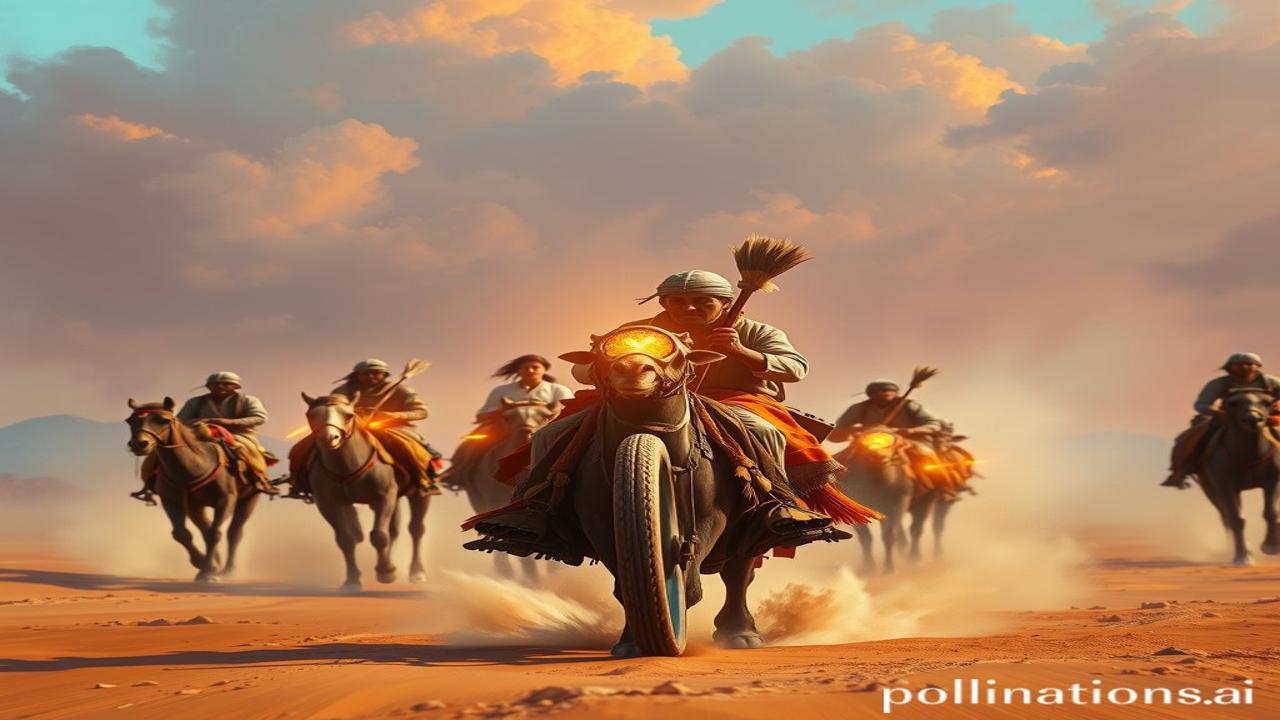Ret ke Samandar Mein Safar: Desert Transportation Traditions of India
Kabhi socha hai, rajasthani mitti ki woh khushboo, un oonth ke pairon ki aahat jo sadiyon se ret ke dariya ko cheerte aa rahe hain? Waqt ki dhool mein kuch kahaniyan chhup jaati hain, un safaron ki jo jeevan rekha the, un rasto ki jo duniya ko jodne ka zariya the. Aaj hum inhi desert transportation traditions ki khoj mein niklenge.
इतिहासिक पृष्ठभूमि / Historical & Cultural Context: Desert Transportation Kya Hai?
Desert transportation, as the name suggests, refers to the methods and means of moving people, goods, and information across desert landscapes. In India, this is primarily centered around Rajasthan, Gujarat, and parts of Punjab, regions where vast stretches of arid land presented unique challenges to travel.
Yeh tradition hazaron saal purani hai. Think back to the Indus Valley Civilization (3300-1700 BCE). Imagine, trade routes were established, connecting settlements across deserts. Uss waqt, oxen carts and camels were the most common mode of transport. Camels, particularly the dromedary (ek hump wala camel), became invaluable due to their endurance, ability to survive with minimal water, and adaptation to sandy terrain.
Why is it important? Because these transportation traditions shaped trade, culture, and communication for centuries. They dictated settlement patterns, influenced the design of tools and clothing, and even played a role in warfare. Trade routes like the Silk Road, which crisscrossed through parts of the Indian desert, facilitated the exchange of not just goods but also ideas, technologies, and religions.
ज़मीनी सच – लोग और जीवन / Deep Dive: A Glimpse into Desert Life
Picture this: a Rajasthani family, generations of whom have been camel traders. Baba Ramdev, his face weathered by the desert sun, carefully loads his cart with vibrant textiles and spices. His daughter, Laxmi, helps him secure the goods, while her younger brother, Chotu, tends to the camels.
“Beta, suraj dhalne se pehle humein Agrah puchna hai,” Baba Ramdev says, his voice raspy but full of affection. “Wahan bazar mein humara maal bikega, aur hum ghar ke liye gehoon aur tel lekar ayenge.”
Laxmi, wearing a bright leheriya sari, dreams of seeing the colorful city of Jaipur, which her father has described in detail. Chotu, on the other hand, is just excited to ride on the camel and listen to the stories Baba Ramdev tells along the way.
Their camels, named Badal and Bijli, are their lifeline. They know the desert like the back of their hand, navigating through shifting sands and scorching heat. The journey is arduous, filled with the constant fear of sandstorms and bandits. But it’s also filled with the camaraderie of fellow travelers, the shared meals around a crackling fire, and the mesmerizing beauty of the desert landscape at night.
Rulers and warriors depended on camels for swift transportation and communication during wartime. Saints and mendicants traveled on foot or with minimal belongings, spreading messages of peace and spiritual wisdom. Artisans and craftsmen relied on camels to transport their creations to far-flung markets.
धरोहर और पहचान / Cultural Significance Today: Echoes of the Past
Even today, in parts of Rajasthan and Gujarat, you can witness the lingering impact of these transportation traditions. Camel carts are still used for local transport, especially in rural areas. Festivals like the Pushkar Camel Fair celebrate the cultural importance of camels and their role in the region’s history.
You see echoes in the architecture too. The stepwells (baoris) and water harvesting systems developed to support these desert travelers are still functional in many places. The unique clothing and jewelry designed for desert life, offering protection from the sun and sand, continue to be a part of the local identity.
Yeh Bharatiyata ka hissa hai – the spirit of adaptability, resilience, and ingenuity that has allowed people to thrive in challenging environments for centuries.
मजेदार तथ्य या भ्रम-भंजक / Fun Fact or Myth-Buster: Camel Cool Facts!
Myth: Camels store water in their humps.
Truth: Camels’ humps are actually stores of fat. This fat can be metabolized into water and energy when needed, allowing them to survive long periods without food or water.
दृश्य और भावनाएं / Visual & Sensory Layer: Painting the Desert Scene
Imagine: the sun beating down on the golden sand, the air shimmering with heat. The rhythmic sway of the camel as it trudges forward, its soft padding feet the only sound breaking the silence. You smell the dry, dusty air mixed with the faint aroma of camel dung and roasted spices. The texture of coarse wool on your skin, the taste of lukewarm water from a leather flask, the sight of distant mirages teasing you with the promise of water.
अंतिम विचार या उद्धरण / Closing Insight or Quote
The desert teaches us about resilience, adaptation, and the importance of community. It reminds us that even in the harshest environments, life finds a way to flourish.
“Ret pe chal ke bhi geeli rahi meri ungliyaan,
Maine dekha hai aankhon mein samundar kisike.”
(Even after walking on sand, my fingers remained wet,
For I have seen the ocean in someone’s eyes.)
This sher encapsulates the enduring spirit of the desert and its people, a spirit forged in the crucible of challenging environments and sustained by the traditions of connection and resilience.
